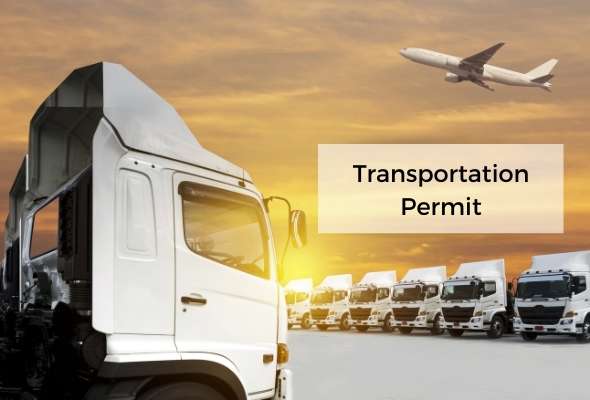
What Factors Should Organizations Consider Before Outsourcing Their Internal Audit Functions?
+91 1141182211 Outsourcing has become a strategic choice for many organizations looking to streamline operations, reduce costs, and enhance efficiency.

It can be challenging to come up with a new business idea. A delivery business may be a suitable option for those who seek the independence of being a small business owner without reinventing the wheel. Starting your own delivery business is a terrific opportunity to be your own boss and earn a decent salary without much effort.
The delivery business is a simple service that entails taking merchandise, securing it within your mode of transportation, and delivering it to the final location. That model can be applied to almost anything. This necessitates a difficult choice between a broad model and a narrowly targeted specialty approach.
In terms of niches, working as a courier for documents and small products is a popular option. Couriers are used by real estate brokers, banks, and financial organizations to transport financial paperwork. Many of these are highly essential documents, such as official contracts and even checks, and they must be given by hand.
A local, general delivery business, on the other hand, can transfer anything reasonable in a local area. Food deliveries, moving assistance, and any other job deemed appropriate are all available as a general service. The mode of transportation is the most important piece of equipment in the delivery industry. Local deliveries can be made by bicycle or motorcycle. A car, van, or truck is standard, although larger box vans and specialist vehicles are utilized for larger equipment.
Licensing your business is necessary for collecting and paying taxes, as well as protecting your assets. Although you can operate as a single proprietor and merely license the business name, an LLC business model adds a degree of protection by separating the business from your personal life.
To operate, you will need a state license as well as a district or city license. This varies by location, so check with your local tax and business registration agencies for further information.
Insurance is also essential in this industry. To protect yourself and any passengers or other drivers, your car will require commercial insurance. Including a cargo, protection strategy is also vital, especially if you ship high-value commodities.

Local operations do not necessitate any Department of Transportation licensure, but larger cargo rigs and anything crossing state lines must have a commercial Department of Transportation Permit. If the vehicle is classified as commercial, you may require a special license.
After you have launched your company and set up your equipment, it’s time to find customers and make a profit. The market is evident in the financial segment, and you may approach real estate businesses and local financial institutions immediately.
Define your target markets and get your name in front of consumers in other categories. Put your company name and logo on your car, advertise in local print media, and run a few Facebook ads with local targeting. Referrals are your most valuable business source. Give each customer a business card and ask for references immediately. It takes time to establish a name, but with local marketing and referral systems, your company may amass a large customer base.
Websites aid in the establishment of a professional image and the marketing of the company’s offerings. Client testimonials, photos of delivery trucks, pricing, the geographic region served, and operating hours can all be seen on websites. Other marketing techniques for acquiring new delivery customers include eye-catching business cards, flyers, and promotional offers.
It is OK to establish early route ideas virtually utilizing internet maps and address directories when arranging trips. However, before finalizing initial delivery routes, plan a test run in which you drive the regular route without making any deliveries. You may notice busy crossroads, one-way streets, or large construction sites that you should avoid.
Because of the potential for variation in distance driven and item size, pricing for delivery routes can be difficult. It is acceptable to charge varying rates to different clients; for example, some customers may
receive price savings for repeated deliveries when compared to clients who reserve a one-time delivery.
Optimization is critical to ensure smooth operations. Field staff and courier agents should be able to monitor their orders in real-time, ensuring that customers receive their orders on time.
Effective fleet management and last-mile delivery optimization will help you make fast hyperlocal deliveries, whether you are an e-commerce vendor or a local delivery service.
Successful management of the transportation distribution process is becoming increasingly important nowadays. MIMO Technologies offers a tech-enabled platform to easily transport goods and products and achieve a high degree of precision in e-commerce and hyper-local delivery.
Our field officers are qualified to complete deadline-oriented work and deliver to your customer in India’s most remote locations within pre-determined timelines. More than 14000 field officers serve in various rural and semi-urban areas.
Like this article?
More To Explore

What Factors Should Organizations Consider Before Outsourcing Their Internal Audit Functions?
+91 1141182211 Outsourcing has become a strategic choice for many organizations looking to streamline operations, reduce costs, and enhance efficiency.

Outsourcing Internal Audit: Evaluating the Upsides and Downsides for Your Organization
+91 1141182211 In today’s dynamic business environment, companies face increasing pressure to enhance efficiency, manage risks effectively, and ensure compliance

A Background Verification Guide: Frequently Asked Questions and Their Answers
+91 1141182211 Background verification (BGV) is a crucial process used by employers to ensure they are hiring candidates with accurate